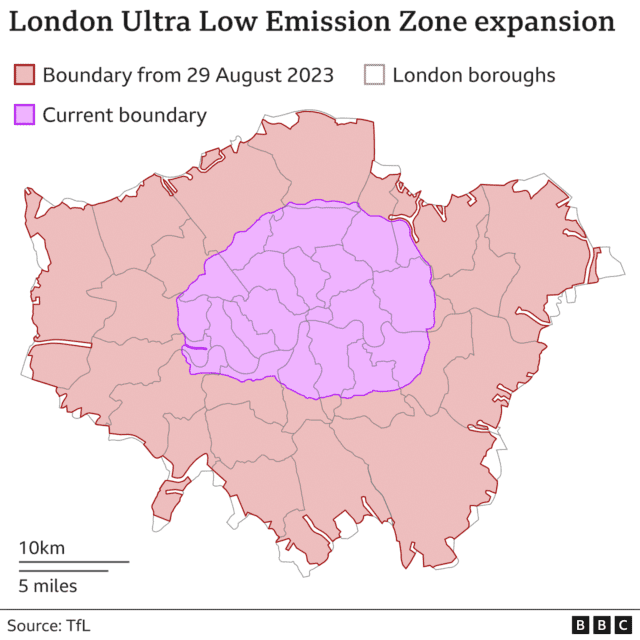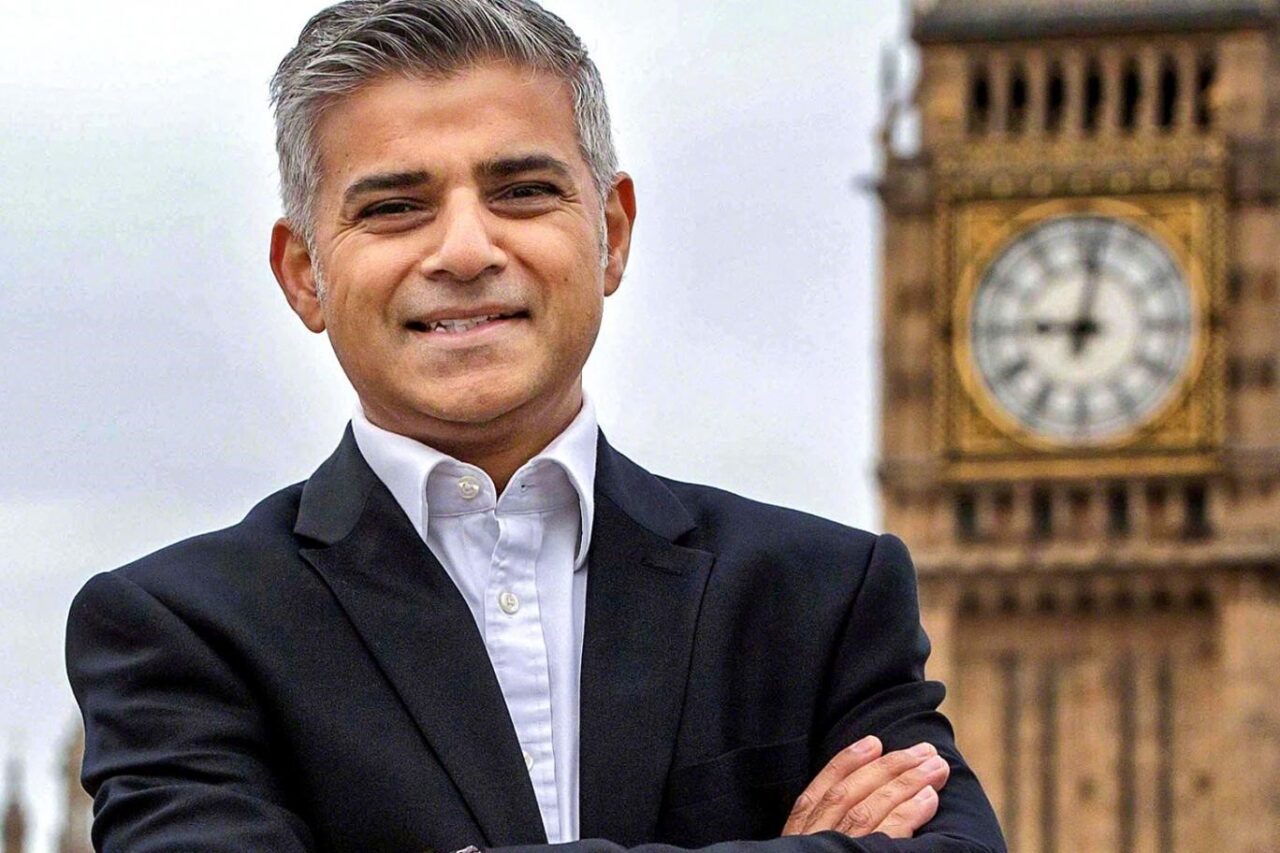As the United Kingdom gets along its bumpy drive to net zero, the city of London has recently come under focus. And its mayor, Sadiq Khan, has been in the bull’s eye over the Ultra-Low Emission Zone (ULEZ) expansion across London boroughs.
ULEZ entails the designation of certain areas where drivers of high-polluting vehicles must pay a charge to drive. In the plan, vehicles that do not meet the specified emissions standards for nitrogen oxide and particulate matter are required to pay a daily charge of £12.50 to drive within the ULEZ area. The system utilizes cameras around London that scan registration plates to determine whether the charge is applicable. Most gasoline-powered cars manufactured after 2006 and diesel cars made after September 2016 meet the standards and are compliant. The main purpose of ULEZ is to improve air quality, reduce harmful emissions, and address the adverse effects of pollution on public health. The scheme primarily targets nitrogen dioxide (NOx) and fine particulate matter (PM2.5), which have been linked to thousands of premature deaths and negative impacts on children’s lung development. While petrol and diesel vehicles also contribute to CO2 emissions and climate change, ULEZ focuses on curbing these two critical air pollutants to create healthier living conditions and alleviate the strain on the NHS. This ambitious policy has however sparked a clash of opinions among citizens, businesses, and politicians.
Politics of cost of living crisis
ULEZ was originally proposed by Boris Johnson in 2013 during his time as mayor of London. It took Mr. Khan to begin implementation in 2019, expanding on an earlier low-emission zone introduced in 2008 for larger vehicles. The incumbent furthered the scheme from the initial congestion zone, extending current boundaries to about a quarter of London’s urban areas- from Tottenham in the north to Brixton in the south. The current contention arose from the plan to expand ULEZ even further to areas in Buckinghamshire, Essex, Hertfordshire, Kent, and Surrey. The cost of living crisis has become a rally countermand to Khan’s incursions. Even his party man, the Labour candidate for the just concluded bye-election, advocated for halting the expansion during the campaign. ULEZ has been touted as a major reason why the Conservatives won the Uxbridge bye-election. Steve Tuckwell of the Conservative party, who campaigned against the scheme, won the election although with a slim majority. Sir Keir Starmer, leader of the Labour Party, was unequivocal that the expansion cost the party victory, calling Mayor Sadiq Khan to reconsider his plan to go further to outer London. Other party members hold a similar position, berating Khan for not listening to voters.

Scrapping scheme not enough…
The ULEZ policy significantly influences transportation and businesses within its designated zone. Its effectiveness in reducing air pollution and adapting to changing trends remains uncertain, requiring ongoing collaboration among policymakers, businesses, and the public. Sadiq Khan and other key proponents hold a responsibility to address concerns in this regard and evolve the initiative accordingly. For instance, a £160 million allocation scrappage scheme was made, initially available to low-income individuals, some small businesses, and London-based charities. Eligible drivers can receive up to £2,000 for scrapping a car, with varying amounts for vans and motorbikes. The expansion, however, has generated division, with clean air campaigners supporting it, but some residents, businesses, and politicians expressing serious concerns. Issues include the financial impact during a cost-of-living squeeze and the nine-month notice period. Some affected individuals believe the scrappage scheme won’t adequately help them. The cost of second-hand ULEZ-compliant cars has also risen. This has also led to litigations, including legal action by five Conservative-run councils, which was eventually dismissed by the High Court, leading to public protests. The mayor defends the plan, emphasizing its importance in preventing health conditions linked to air pollution and excess deaths. Preparations, such as camera installations, continue.
Early signs of success…
ULEZ has already demonstrated some success. A new report shows approximately nine in ten cars seen driving in outer London meet the standards. Also, car compliance with ULEZ standards in outer London was estimated at 85 percent in November 2021, up from around 75% in earlier analyses from June 2020. Furthermore, roadside nitrogen dioxide (NO2) pollution has been reduced by 36% in the ULEZ zone, with an estimated 29% of this reduction attributable solely to the ULEZ. It is further estimated that the expansion into outer London is projected to save nearly 27,000 tonnes of CO2 in its first year, more than double the achievement of the central London ULEZ in its initial year.
Searching for balance …
While ULEZ has achieved some level of success, it remains a highly debated measure, even though it is clear that its potential benefits for air quality in London are being weighed against the concerns about its impact on residents and the political landscape. As with any bold policy initiative, the true success of the scheme will depend on its long-term impact and adaptability, and as such, striking a balance between environmental objectives and economic considerations will be crucial in navigating a balance between the pros and cons of a scheme that promises a healthier and better thriving London for its citizens.
Found it interesting and would like more in the mail?




